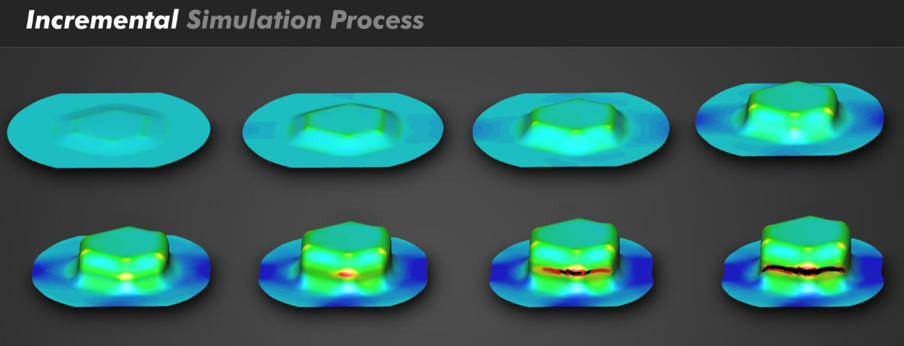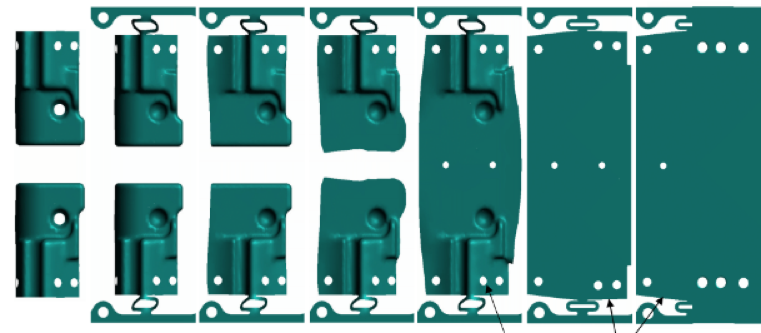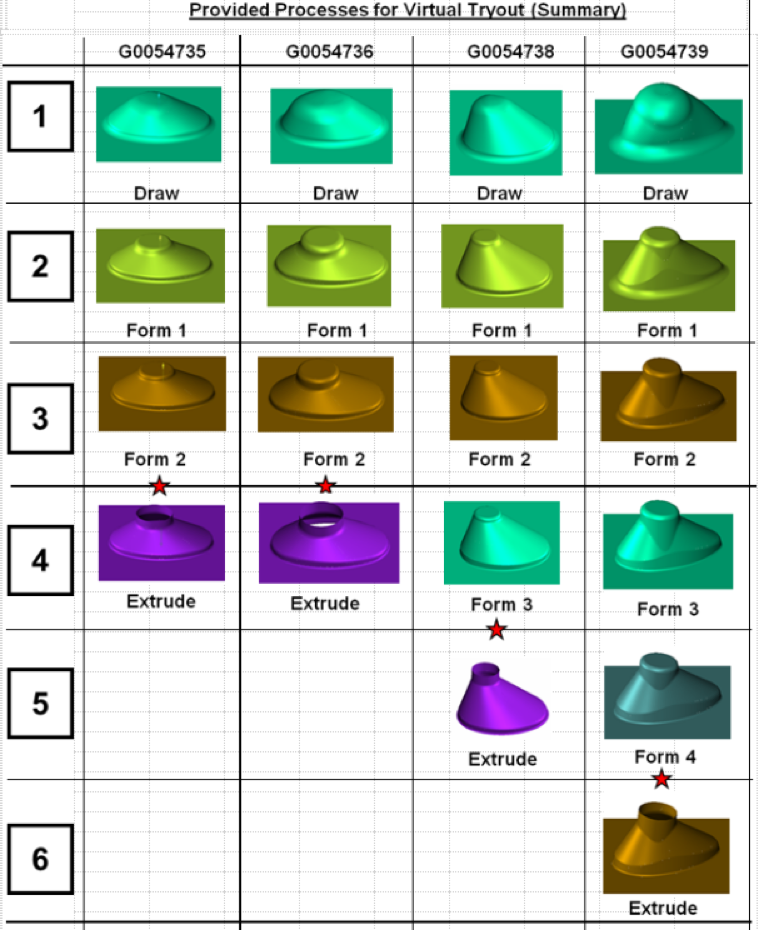The Impact of Advanced Forming Simulation on Product Manufacturing
Contents
Simulation technology has come leaps and bounds since it was first developed and is now one of the cornerstones of modern manufacturing. Simulations can now be used to calculate material usage, tonnage, forming feasibility, and much more with respect to new sheet metal products.

Incremental simulation is used to predict splits in sheet metal parts before manufacture.
Advanced Simulation for Sheet Metal Forming
Every sheet metal part in the automotive industry is developed and optimized using sheet metal forming simulation, and simulation has become the established method by default. The forming or stamping of a sheet metal part is simulated on a computer using advanced simulation technology, making it possible to predict wrinkles, splits, springback and many other sheet metal forming defects, very early in the product/tooling development cycle. Because of the ease of use of today’s simulation software, it is not necessary to manufacture prototype tooling to determine the outcome of a proposed tool design.

Incremental simulation is used to predict splits in sheet metal parts before manufacture.
Stamping and forming simulation uses the finite element method based on a full incremental technique. To receive accurate simulation results, a full and detailed 3D model of the proposed tooling must be available, and the parameters of the process must be included as accurately as possible.
A sheet metal forming simulation does not stop at a single forming operation. Today’s advanced simulation software simulates each and every step of the metal forming process, from blank to final restrike, including springback calculations in between all forming steps. Every secondary operation can be simulated to ensure the entire process is considered during simulation, and prevent nasty surprises on the shop floor.

Every step of the design is simulated, including full progression strips with complex stretch carriers.
A typical list of parameters needed for accurate simulation are:
- – Final part geometry
- – Tooling geometry for each and every operation
- – Mechanical material properties of the sheet metal
- – Friction values of finished tools
The outputs from simulation typically are:
- – Stresses and strains (calculated at EVERY increment in each forming stage)
- – Prediction of wrinkles and splits
- – Thickening and thinning
- – Springback prediction at any stage of the process
- – Process variations due to changing inputs (such as material properties of the sheet)
- – Accurately developed blank shape or retrim profiles, where applicable
Forming simulation is not limited to the tool design development stage. If forming simulation is implemented at the product design stage, this results in a product design that is easier and less costly to produce. The early use of simulation in the product design phase always saves time and cost during the tooling phase, and ultimately reduces or eliminates trial and error tuning of the forming tools, and often removes the need to make undesired changes to the product shape. If a tool design is not yet fully functional, simulation will also allow optimization of the tool design to achieve the required outcome, without physically manufacturing the tool.
Many design alternatives can be assessed quickly and easily in simulation, which results in significant time and cost savings. The number of physical tool tryouts is reduced and time to market is shortened beyond what otherwise would be possible. Higher quality part and tool design results and production of the simulation part/process is more reliable if simulation is utilized during the design phases.

Every step of the design is simulated, including full progression strips with complex stretch carriers.
Learn More
Interested in learning more about what is possible with advanced forming simulation software? Take a look at a few of our case studies and see what’s we’ve accomplished for our clients.
